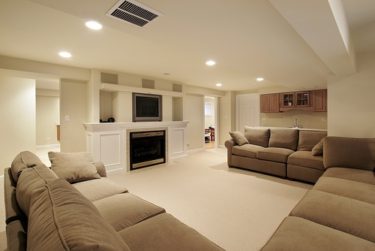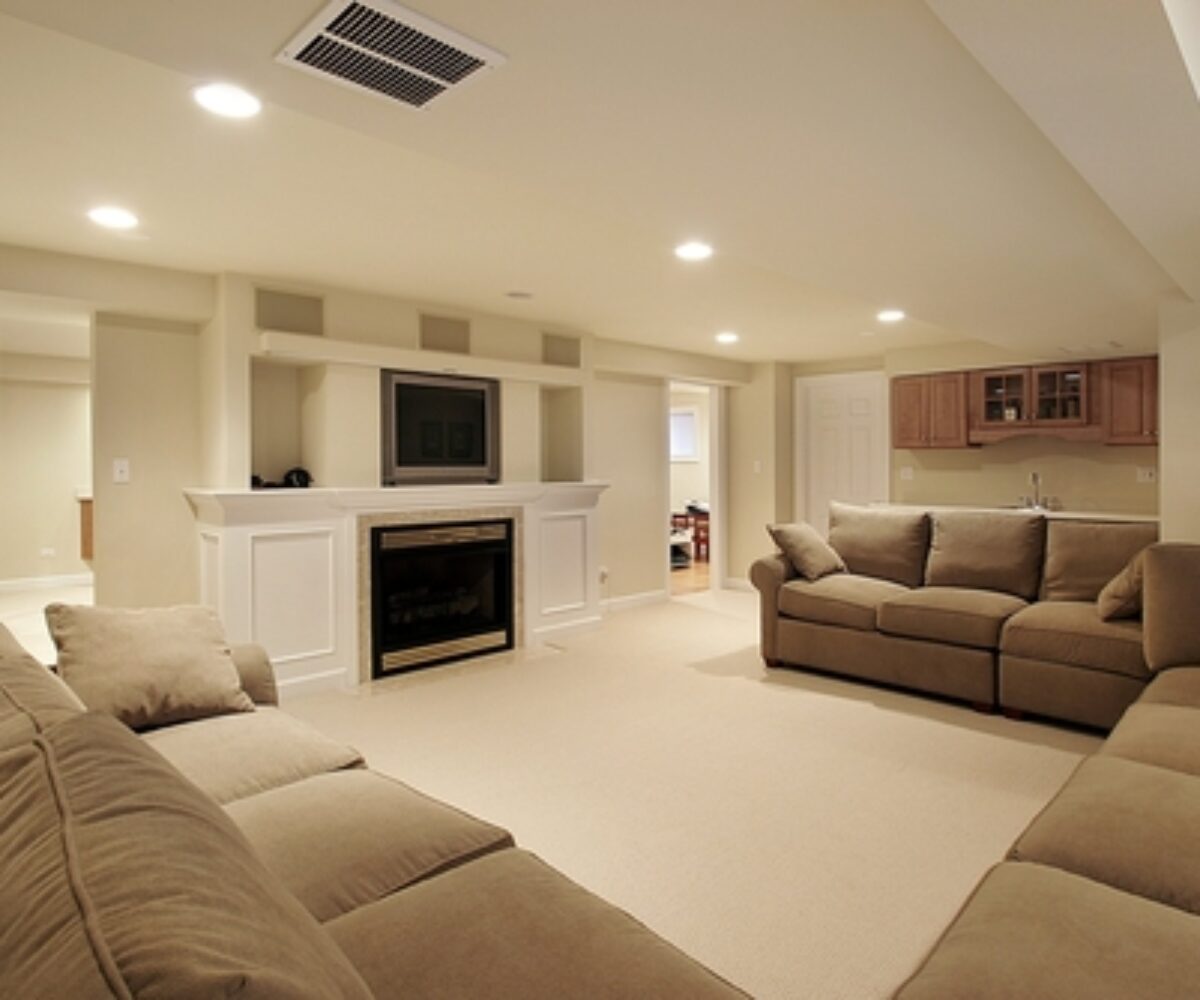3 Ways to Heat a Basement

1. Use your existing HVAC system.
As a Denver area resident your central heating system is your home’s first line of defense against the icy winter chill, and with a bit of re-engineering you may be able to use it to heat the basement as well.
In some circumstances it may be challenging to add more ductwork and vents to your home’s existing network, but trained HVAC professionals can often conquer the logistics, providing your home’s architecture presents no obstacles and the HVAC system hasn’t been installed in an inconvenient location.
Of course, if the furnace is installed in the basement, adding some extra ductwork and venting should be a relative piece of cake, and by far the most affordable option for adding heat to your new downstairs living area.
2. Install a direct-vent gas fireplace.
From an aesthetic standpoint, adding a direct-vent gas fireplace to your basement may be the most attractive option. A direct-vent fireplace burns natural gas or propane instead of wood, eliminating the expense, mess and fire danger that makes the old-fashioned fireplace an impractical choice for most homeowners, despite its rustic charm and romantic aura.
With its capacity to produce both radiant heat (from the fire) and convective heat (if a fan is included), a high quality direct-vent gas fireplace can generate immense warmth, and despite its singular location can effectively heat most large-size basements.
Modern direct-vent gas fireplaces are designed to mimic the older style fireplace as closely as possible in appearance and function, which explains their recent surge in popularity. These fireplaces are generally vented horizontally through back walls, but they can also be tied into a top vent (chimney) or side vent, depending on the design of your home and location of the basement.
Regardless of the venting configuration direct-vent fireplaces burn swift and clean, making them a safe and all-around pleasurable addition to a basement gathering spot.
3. Add a basement floor Radiant Heating System
Providing wall-to-wall coverage, a radiant heating system installed beneath the floor releases heat everywhere throughout the basement. As you might imagine, below-floor radiant heating systems create basement floors that are warm and comfortable to walk or sit on–a noteworthy characteristic that many basement aficionados appreciate.
In a radiant heat system, heated fluid is pumped through a tubular grid that may be installed beneath a concrete slab or above the slab and beneath the flooring. With the latter option the slab is heated and then releases its heat gradually, its enormous thermal mass steadily supplying warmth for as long as the heating system functions.
Basement floor radiant heat systems are compatible with a variety of home energy sources (natural gas, oil, electricity, propane, solar, etc.). Because they are so efficient, they will consume up to 40 percent less energy than an HVAC forced-air system.

